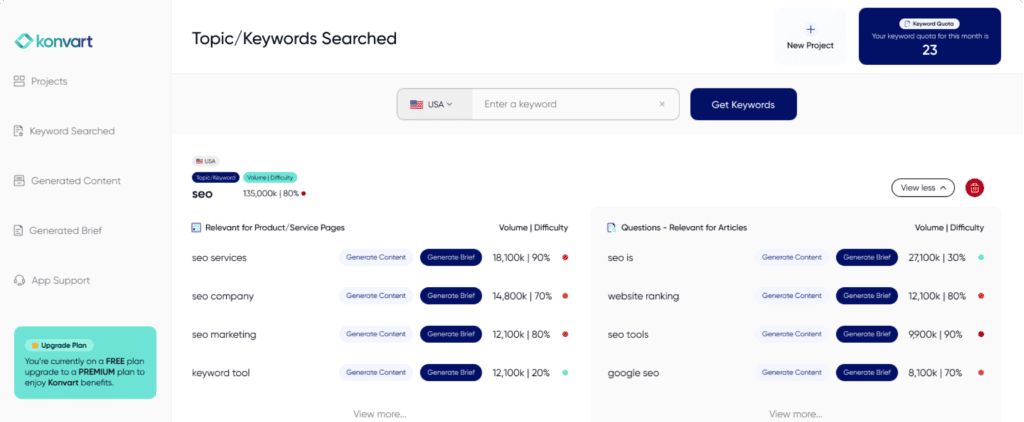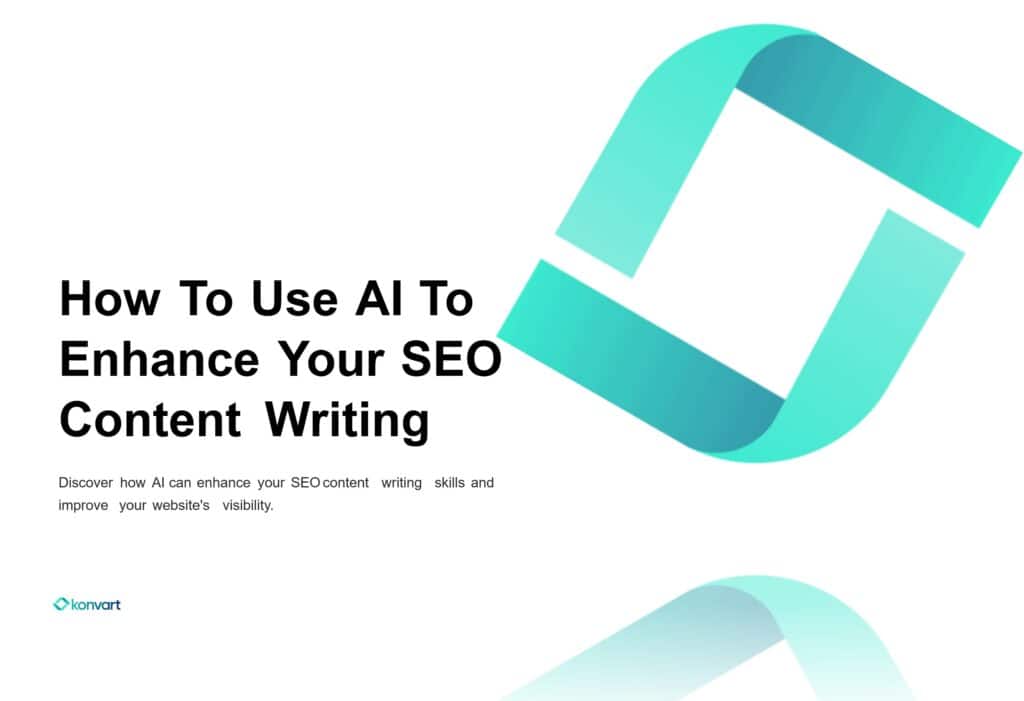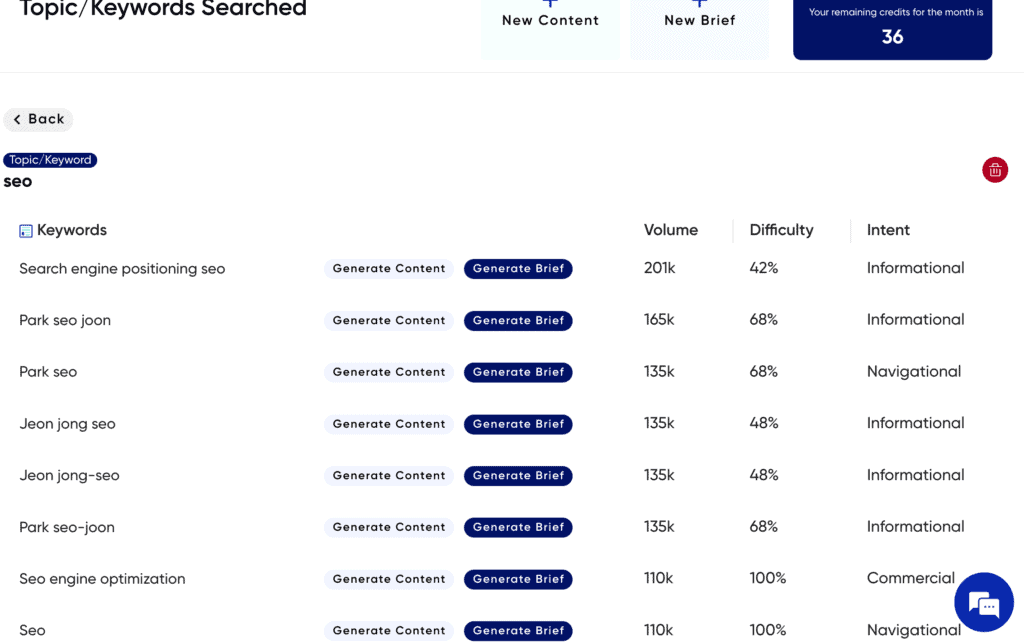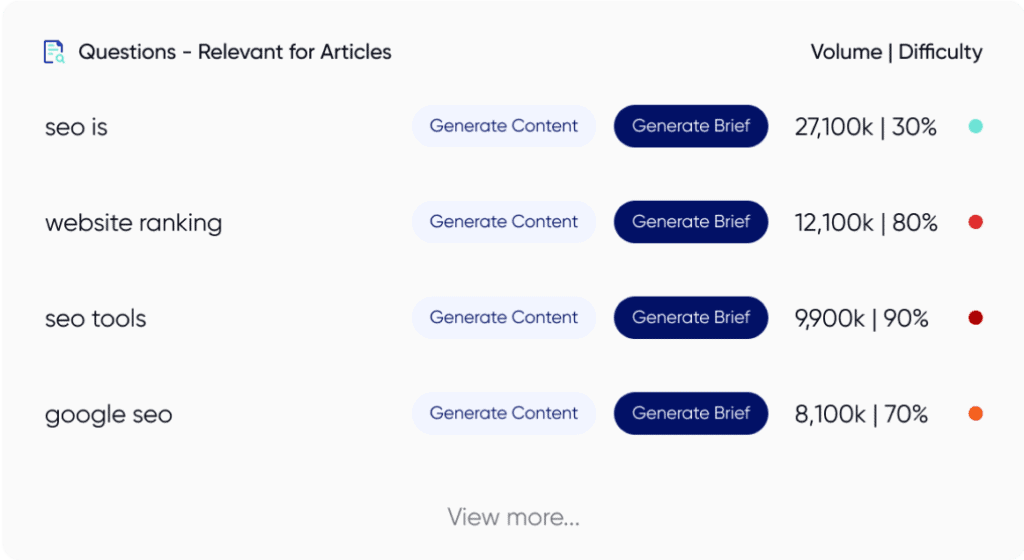Artificial intelligence (AI) detectors are tools designed to discern whether content has been generated by AI or a human author. These detectors analyze patterns and inconsistencies in text that typically differentiate human writing from machine-generated content. However, the effectiveness and accuracy of these tools can be misleading.
It is a common misconception that AI detectors infallibly separate AI-created content from that crafted by humans or that search engines like Google prioritize human-written content over AI-generated material. In reality, the primary concern for search engines remains the relevance and quality of the content, regardless of its origin.
What is an AI Content Detector?
An AI content detector is a tool designed to identify whether a piece of text has been generated by artificial intelligence. This technology is becoming increasingly important as AI-generated content proliferates across various digital platforms.
The detector works by analyzing patterns in the text that are typically characteristic of AI models, such as certain syntactic structures, word choices, and phrasing that may not be common in human-written content.
One of the core technologies behind AI content detectors is machine learning. These systems are trained on vast datasets containing examples of both AI-generated and human-written texts. By learning the distinguishing features of each, the algorithm can then predict the likelihood that a new piece of content was created by a machine. For instance, repetitive sentence structures or unusual word combinations can be red flags.
Accuracy is a critical aspect of these detectors. AI detectors are often believed to distinguish between human and machine-written texts infallibly. However, this is not entirely accurate. Studies have shown that while these tools are proficient, they are not perfect. There are still instances where human content might be misclassified as AI-generated and vice versa. We explored how accurate they are (based on research data) below.
How Do AI Detectors Work?
These detectors employ various methods to distinguish between human-written and AI-generated text, each with its own strengths and limitations.
Machine Learning Models
At the core of most AI detection tools is machine learning (ML). These models are trained on vast datasets containing examples of both AI-generated and human-written texts. By analyzing patterns and discrepancies between these two types of content, ML models learn to predict the likelihood that a new piece of text was generated by an AI. For instance, OpenAI’s GPT (Generative Pre-trained Transformer) outputs can often be identified based on certain textual idiosyncrasies like repetition or unusual syntax that are less common in human writing.
Feature Analysis
Another approach involves feature analysis, where specific attributes of the text are examined. These can include readability scores, the frequency of word and phrase repetitions, sentence length variability, and more. Statistical anomalies in these features may suggest the text was machine-generated. For example, AI texts might display higher predictability in word choice or a lack of nuanced emotion, which sophisticated algorithms can detect.
Stylometric Techniques
Stylometry, the study of linguistic style, has also been adapted for AI detection. This technique analyzes the author’s unique writing style—looking at aspects like sentence structure, word preference, and grammar usage—to identify inconsistencies typical of AI-generated content. If a text lacks subtle complexities or shows patterns different from previously analyzed works by the same author (assuming they’re known), it might be flagged as AI-produced.
These methods are integrated into more comprehensive systems to improve accuracy. However, they are not foolproof. AI detectors are designed to assist but not replace human judgment. Content creators should be aware that these tools serve best as aids in identifying potential AI content but should not be solely relied upon for definitive answers regarding content authenticity. The effectiveness of these tools also does not influence how search engines like Google rank content; relevance and user engagement remain paramount in search algorithms regardless of whether content is human or machine-generated.
Key Technologies Behind AI Content Detection
- Machine Learning Algorithms: At the heart of AI content detection lies machine learning (ML), which enables computers to learn from and make data-based decisions. Specifically, supervised learning models are trained on large datasets labeled as “human” or “AI” generated content. These models learn to recognize patterns and nuances characteristic of each type, improving their accuracy over time with more data.
- Natural Language Processing (NLP): This technology is essential for understanding and processing human language. NLP helps dissect text structure, meaning, and context, which is vital for distinguishing between the subtleties of human and machine-generated content. Advanced NLP techniques such as sentiment analysis, syntax tree parsing, and semantic analysis allow detectors to analyze text at a deeper level than mere word patterns.
- Neural Networks: Deep learning models like transformers have particularly been instrumental in advancing AI content detection. These neural networks are adept at handling sequential data (like text) and can capture long-range dependencies in language, a common challenge in distinguishing AI-generated text, which often lacks coherence over longer stretches.
- Data Fingerprinting: This technique involves creating unique identifiers for data pieces based on their characteristics. In AI content detection, fingerprinting can help identify the source of a piece of content by comparing its features with known AI-generated text fingerprints. This method enhances the ability to track and flag content closely resembling the output from specific AI text generation models.
4 Techniques for Identifying AI-Generated Text
Here are four manual techniques that can help in distinguishing AI-generated text from human-written content.
1. Analyzing Consistency and Flow
One common characteristic of AI-generated text is a lack of consistent flow in the narrative or argument. While human writers naturally incorporate their personal tone and style fluctuations, AI tends to maintain a uniform tone throughout the text. Additionally, AI may struggle with complex narrative threads, leading to inconsistencies in story or argument development.
2. Checking for Repetitive Patterns
AI algorithms often rely on certain phrases and sentence structures repeatedly throughout a piece of text. This repetition is due to the way these systems learn from pre-existing data sets which may have limited variations of phrasing certain ideas. Tools like text analysis software can scan documents for these repetitive patterns more efficiently than the human eye.
3. Evaluating Contextual Understanding
AI-generated content sometimes misses the mark on deep contextual understanding or shows a superficial grasp of nuanced topics. It might misinterpret idiomatic expressions or cultural references that require specific contextual knowledge or personal experience, which AI systems are currently unable to acquire fully.
The Practical Uses of AI Detection Technology
Artificial Intelligence (AI) detection technology has several practical applications that are reshaping various industries. This technology is primarily used to identify whether content has been generated by AI or human effort. Here are some of the key uses:
- Content Moderation and Management: AI detection tools help identify AI-generated text for marketing if the company doesn’t want to use AI in content creation.
- Academic Integrity: These tools assist educators in identifying assignments that may have been generated through AI text generators, ensuring students engage in genuine learning and original content creation.
- Legal and Compliance Fields: AI detection helps verify the origin of texts used in legal documents, contracts, and compliance reports.
- Publishing Industry: AI detection tools can help verify that works submitted for publication are the original creations of human authors, thereby preserving artistic integrity and copyright standards.
Although the above are practical uses, I will again emphasize that the current AI detectors aren’t 100% accurate. So, you may get a lot of false positives; you mustn’t penalize a piece of work or a writer due to data from AI detectors only – read the content and decide.
How Accurate are AI Content Detectors?
Recent studies suggest that AI detectors are accurate only 35% of the time and even less so if the AI content is edited a bit (17.4%). This implies an 82.6% chance that content could be misclassified.
Our team has had a varied experience with AI detectors, which led us to question their reliability in certain situations. To gain a more grounded perspective, we tested several tools on a mix of AI-generated and human-written content. During our experiment, we found that the accuracy of AI detectors can be inconsistent. For instance, one popular tool flagged 20% of human-written articles as AI-generated.
Misclassification in AI Content Detection
Misclassification can occur in two main forms: false positives, where human-generated content is mistakenly flagged as AI-generated, and false negatives, where AI-generated content is not detected.
False Positives: Human Content Flagged as AI
A false positive occurs when the AI detector incorrectly identifies human-generated content as being created by AI – the USA constitution, for example, was flagged as AI-generated. This can happen for several reasons. For instance, writing styles that are overly formal or technical might lack the typical nuances and idiosyncrasies of human writing, leading the detector to misjudge the content. Additionally, heavily edited content or following a strict template could mimic the structured nature of AI-generated texts.
False Negatives: AI Content Overlooked
False negatives happen when AI-generated content is not recognized by the detector and passes as human-written. As AI technology advances, the output becomes increasingly sophisticated, making it harder for detectors to distinguish between human and machine. This is particularly true for newer models of AI that have been trained on vast datasets of human-written text, enabling them to replicate human-like nuances more effectively.
Why Does Misclassification Occur
I have explained a few reasons above.
The context in which content is used also plays a role in detection accuracy. For example, more straightforward, formulaic content might be easier for an AI detector to analyze than complex literary prose or deeply technical writing. Additionally, the training data used to develop these detectors must be continually updated to reflect new writing styles and evolving AI capabilities; otherwise, the accuracy may diminish over time.
Another point for consideration is the inherent bias in training datasets. If an AI detector’s training data does not have a diverse range of writing styles or if it disproportionately represents certain topics or industries, its effectiveness can be compromised. This bias can lead to higher error rates when analyzing content from underrepresented groups or less common subjects.
Also, AI detectors often struggle with texts that use idiomatic expressions, subtle humor, or deeply cultural references. For instance, a detector might flag a creatively written piece full of local slang as AI-generated because it deviates from the standard language models it has been trained on.
Another area where content detectors falter is in analyzing highly technical or scholarly content. Academic papers or articles loaded with specialized terminology and complex sentence structures can confuse AI detectors. These texts might be flagged as suspicious simply because they do not follow the common patterns seen in everyday writing. This misclassification can be particularly frustrating for content creators who publish research-intensive articles.
Lastly, the context within which content is evaluated can lead to errors. Content detectors do not always account for the context or intent behind the text, leading to misinterpretation of its nature. For example, a satirical article intended to mimic nonsensical logic might be flagged as AI-generated due to its illogical reasoning despite being intentionally crafted that way by a human author.
AI Detectors vs. Plagiarism Checkers
AI detectors are primarily designed to identify whether a piece of content was generated by an artificial intelligence model. The focus here is not on whether the content is copied from another source but rather on the nature of its creation—whether by a human or a machine.
Plagiarism checkers, on the other hand, scan content to find exact or closely similar matches to existing texts available in their databases, which include books, articles, websites, and other published materials. The goal is to detect instances where content might have been copied or insufficiently paraphrased, thereby helping to prevent intellectual property theft and maintain academic and journalistic integrity.
One might assume that these tools overlap significantly; however, their functionalities cater to different needs.
The effectiveness of these tools varies. While plagiarism checkers have become quite adept at identifying similar texts (with some services claiming detection accuracies above 90%), AI detectors don’t have such a high accuracy rate.
Conclusion
In wrapping up our exploration of how AI detectors function, it’s crucial to acknowledge that these tools are not infallible. As we’ve seen, the technology behind AI content detection is complex and, at times, can yield unexpected results. This includes the possibility of human-generated content being misidentified as AI-produced and vice versa.
Moreover, it’s important to note that search engines like Google prioritize relevance and quality in content over the nature of its creation—whether by humans or AI – Google wrote that already. This means that the focus should always be on producing high-quality, relevant content that serves the needs of your audience.
Remember, while AI detectors can provide useful insights, they are just one tool in a broader arsenal. Combining their use with human oversight ensures not only compliance with evolving guidelines but also maintains the creative essence that only human touch can provide.

















